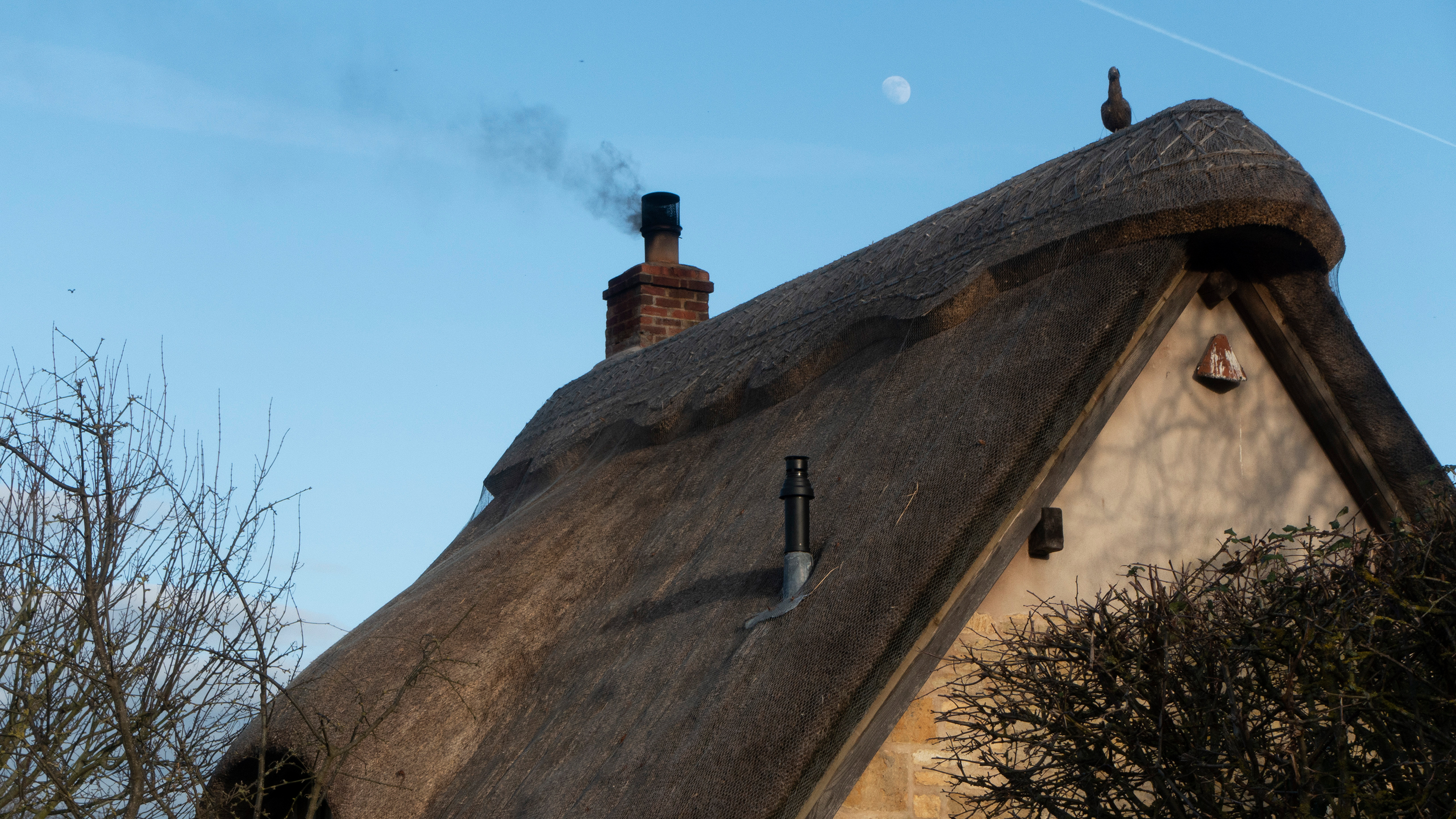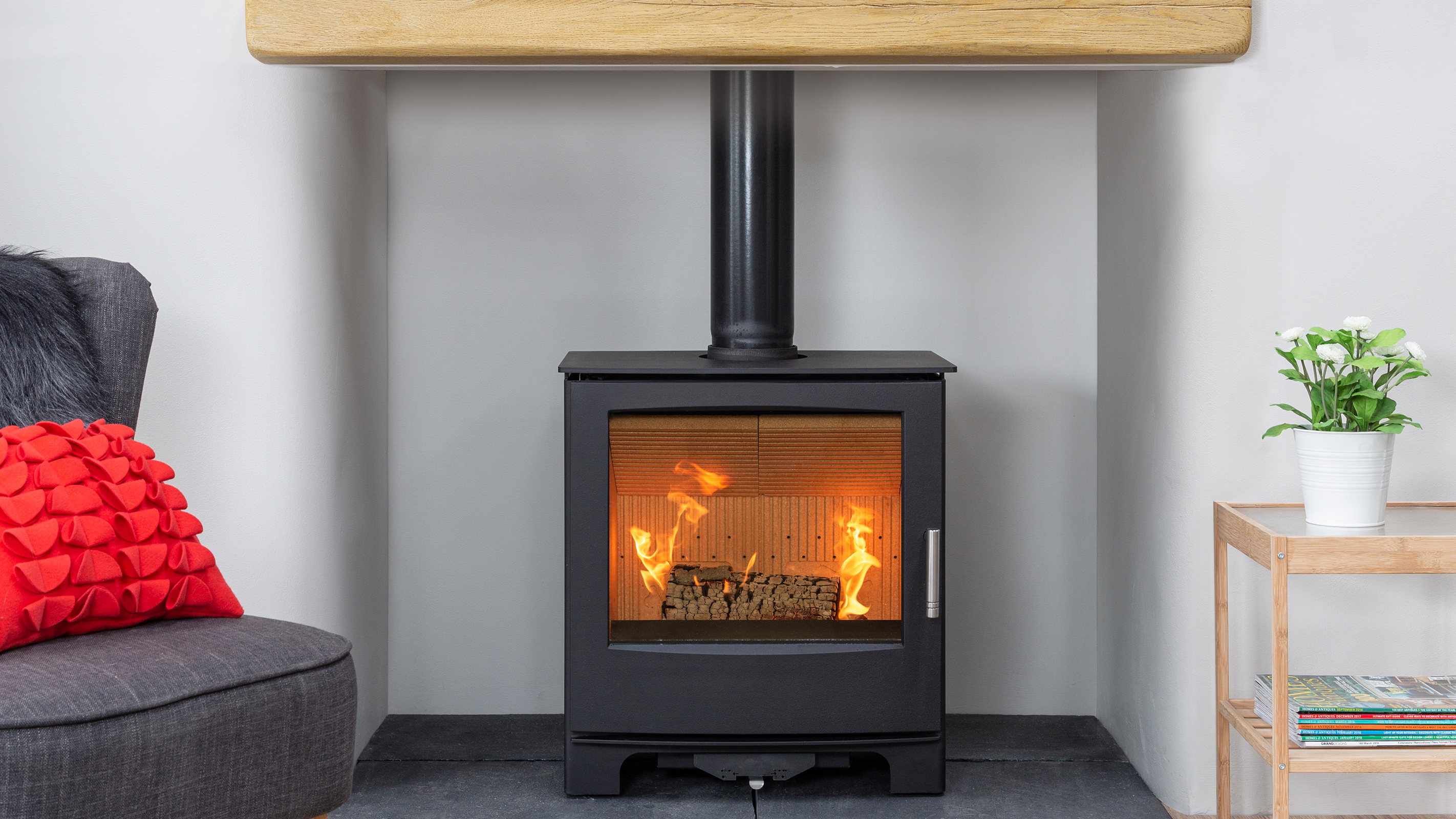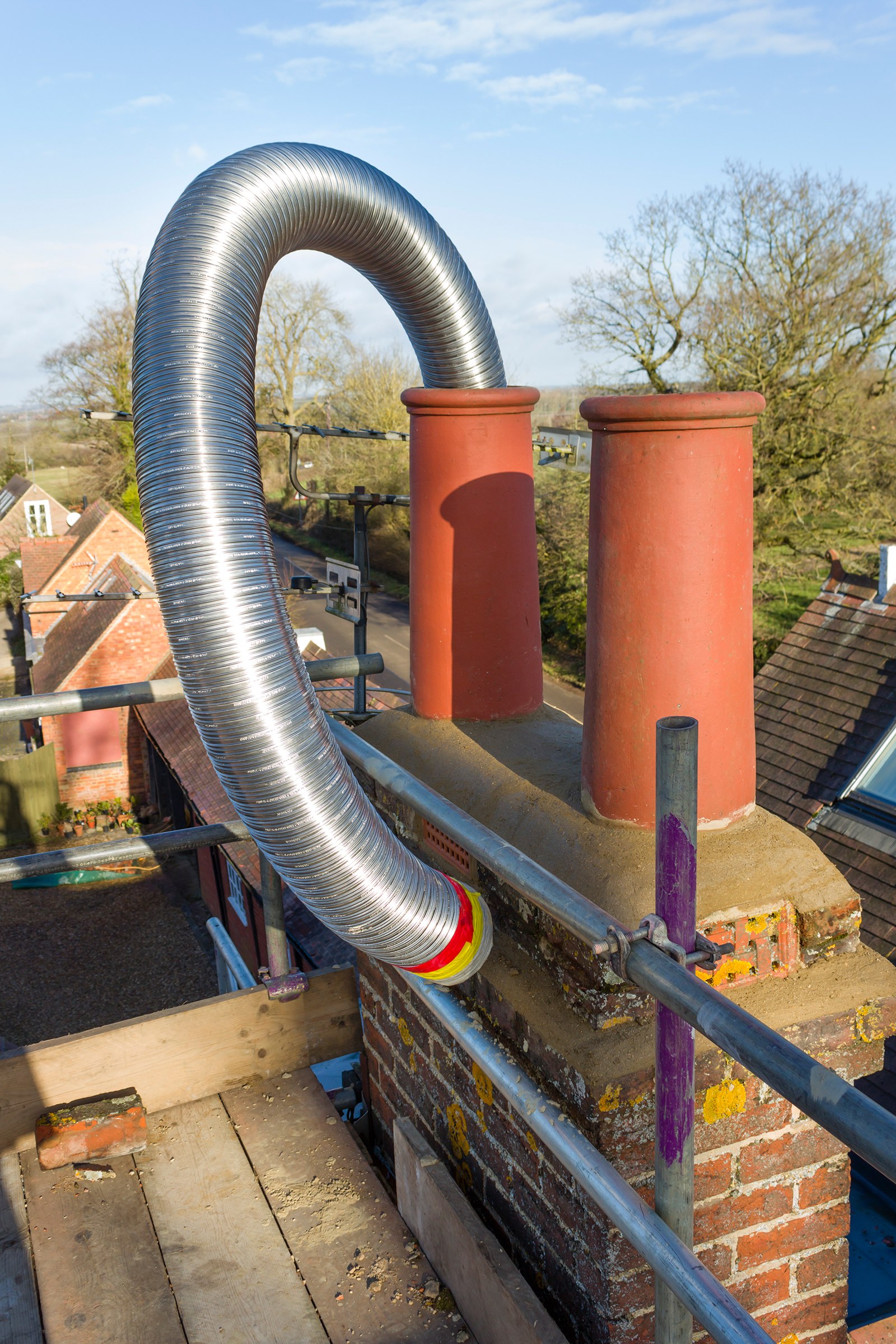How much does a chimney liner cost to buy and install?
Chimney liner costs will vary depending on a number of factors, including the type of chimney you have. Here, we look at how the job is done and what you can expect to pay

There are several reasons why chimney liner costs might be on your mind. Perhaps you have a chimney with no liner, or maybe you have found that the existing chimney liner you have is in a bad state of repair and needs replacing. Maybe you are starting from scratch, installing a new log burning stove or open fire in a self build or extension project.
When it comes to how chimneys work, the liner ensures they perform well and secures the overall safety of your fire too.
Whatever your reasons for looking into the costs associated with this task, our guide explains everything you need to know, from the various types of chimney liner available to whether or not you can carry out this job on a DIY basis.
Calculating chimney liner costs
Chimney liner costs can really vary and there are several reasons for this. One of the main influencing factors will be what type of chimney you have and the kind of heat source you are installing, as well as the fuel you plan on burning.
There are many different types of chimney out there and the liner you choose to install will need to suit the design you have.
It is really useful to get to grips with a few of the basic terms surrounding chimneys and their components before starting to look at types of flues and liners and what they are likely to cost.
- Chimney: The structure that surrounds the flue(s)
- Flue: The void within the chimney through which the products of combustion are taken up, away and into the atmosphere
- Flue liner: The material that is used to form the flue
- Flue pipe: A metal pipe connecting an appliance, such as a log burning or gas stove, to the flue
What is a chimney liner?
Before we explain what a chimney liner is (or flue liner as they are also known), it is handy to take a quick look at the most common types of chimney.
If your house was built before 1960, it is likely you will have a Class 1 chimney. This type of chimney is usually made of of a brick stack that will be located either on the internal or external wall of a property and will house the flue. Class 1 chimneys can be used with many different types of solid fuel fires (such as log burning stoves and open fires) as well as gas fires.
So, what about Class 2 (5" diameter) chimneys (or Class 2 flue systems as they are also referred to somewhat confusingly)? Usually found in houses built from 1960 onwards, they consist of an interlocking metal pipe that runs through the house. They are only suitable for use with certain types of gas fire.
There are also Class 2 (pre-cast) systems. These are made up of a rectangular hollow cavity constructed using concrete or clay blocks. They travel up the wall cavity, ending at a ridge vent or metal flue terminal on the roof. They can be used with slimline gas fires.
A chimney (or flue) lining is a fire-resistant material which is used to line the inside of the flue. This lining can be formed using a number of materials, including refractory concrete or impervious clay, pumice, metal (usually stainless steel) and even ceramic these days.
What do chimney liners do?
There are three main functions of a chimney liner: to contain combustion gases; to improve the flow of these gases and safely guide them up the chimney to outside; and to protect the masonry and walls of the chimney from being affected by these gases through corrosion and extreme heat.
Do I need a chimney liner?
When it comes to the building regulations for chimneys, stoves and fireplaces, although chimney liners are mandatory for new build properties in order to meet the requirements of Approved Document J, if you live in an older property, there is no law stating that you must have the existing chimney lined. However, while you can install a log burning stove or use an open fire without a flue liner, it is not recommended by most experts.
"Chimneys are lined for a number of safety reasons," say the experts at HETAS. "Chimneys may require relining to suit the fuel type being used (a gas flue liner may not be suitable for other fuels). Chimney systems that predate 1965 will often require a modern lining solution."
The majority of houses built after 1964 will have a concrete/clay inner liner and, if after inspection and sweeping, this appears to be in good condition, you don't have to reline it. That said, if the chimney appears to be leaking or damaged (a smoke pellet test is a common way of checking this) there are definitely advantages to be had by lining it, including better draw and a reduced risk of chimney fires or fumes leaking out.
If you are renovating a house and want to use your existing chimney for a log burning stove, you should call out a chimney sweep or ask your stove supplier to check that the chimney is both functional and adequate for this purpose.
It is common, in these instances, to fit flexible metal flue liners by pushing them down the existing chimney. Again, while this is not a strict requirement, it will help to expel smoke and gases quickly and make for a more efficient chimney.
When it comes to open fires, once again, if you are building a new home or extension and are creating an open fireplace, building regulations will require the chimney to be lined. As with stoves, if you are renovating an existing open fireplace, the chimney will only need to be lined if, after being checked, it is not performing as it should. It is recommended that you have a CCTV inspection of your chimney carried out by a chimney professional as part of a level 2 chimney inspection and sweep, which will involve a smoke leakage test, full pressure test, an exterior inspection of the chimney, and a CCTV inspection of the interior of the chimney.

What types of chimney liner are there?
While older properties almost always had chimneys lined with clay or pumice liners (some were not lined at all), these days there is a greater choice available to those fitting a new flue liner.
The most common type of chimney liners are made from stainless steel flexi-pipe. There are two grades available: 316 grade and 904 grade.
316 grade liners are the cheaper of the two and are fine if you plan on burning seasoned wood or have a gas stove. If, on the other hand, you plan on burning coal, or want a more durable option with a longer guarantee, a 904 grade liner will be the best option. Rigid stainless steel liners are also available.
If you are looking at how to replace a gas fire with a woodburner, you might find that your chimney has been fitted with a Class 2 flexible liner. For a wood burning stove, a Class 1 twin skin liner is usually recommended.
Pumice is another option. Pumice liners have great insulation qualities meaning no additional chimney insulation will usually be required. They allow the flue gases to heat up really quickly and therefore help your heating appliance perform at its best, faster. However, they are often not recommended for use with biomass or pellet boilers.
In addition, there are now a range of new lining systems made from resin-based materials. These are usually designed to be inserted into the chimney as a flexible tube before being steamed or ‘cured’ into a hardened structure that fits the bends and shape of the chimney.

What size chimney liner will I need?
If you are installing a new stove, your manufacturer will tell you what size liner you will require — never go smaller than has been recommended as this can prove extremely unsafe.
According to Direct Stoves, in general, stoves up to 20kW will need at least a 6" diameter flue liner, while a DEFRA approved stove may be used with a 5" diameter flue liner provided the manufacturer has stated it is compatible.
In terms of length, your chimney liner needs to be able to reach from the top to the bottom of your chimney — in one piece. A chimney sweep will be able to measure your chimney for you.
Who can install my chimney liner?
You have several options when it comes to actually getting your chimney liner installed.
While there are companies specialising in installing all kinds of chimney liners, many stove manufacturers and suppliers will also offer this service. Additionally, some chimney sweeps are also able to carry out the job.
It is feasible for you to fit your chimney liner on a DIY basis, indeed many people do choose this route, particularly when using stainless steel flexible flue liners. The job involves removing the chimney capping before either dropping the liner down the chimney stack or pulling it up from the bottom — obviously you will need to work out how you are going to get up there to do this.
If you carry out the task yourself, you will neeed to notify Building Control who will come out to inspect and sign off on the work once it is complete. If, on the other hand, you use an installer accredited by one of the relevant Competent Persons schemes (such as HETAS) then they can sign off their work and provide you with a certificate.
How much does a chimney liner cost?
As mentioned before, the cost of lining a chimney will vary depending on the state of your chimney, the size you require and the kind of liner you opt for. If you are carrying out the job as part of a renovation, you may find you need to factor in the cost of repointing a chimney too.
"You can broadly expect a simple installation – meaning installing a liner in your chimney and connecting the stove to the liner – to cost a day’s labour, plus the cost of the liner," explains Chris Bunn at Eurostove. "This will vary depending on the height of the chimney. This installation should always be carried out by a qualified HETAS engineer.
"For a simple installation, with just a flue liner, and connection to the stove you could probably expect to start at about £1,500,” he continues. "However, if you don’t have an existing chimney, or if your chimney is not sound, these installation costs can rise significantly."
"In the case of twin wall liners, for those who don't have natural flues (say where it's been taken out or in barn conversions), installation is probably the most expensive," says Peter Wright from Federation of British Chimney Sweeps (FBCS). "A one metre length is between £100-£200, depending on the make, while the bends are between £80 and £150. Most installations will be around 11m with at least 4 four bends.
"Flexi pipe will either be a 904 or 316 grade, depending on what you burn, " he continues. "They start at about £30/m, but the difference between a 904 and 316 is also around £30, with 904 being the more expensive.
"Then you'll require a thermal jacket for insulation, closure plate and various other components required to install a liner properly, all of which add to costs.
"Basically, a stove may cost around £1,000 to buy (cheaper ones are available) and you should add another £3,000 for the installation, but this will depend on where you live. With the cost of living presently, you may need to add as much as 15% to these costs."
If you were to opt for a concrete, pumice or ceramic liner, you would be look at costs higher than this.
Get the Homebuilding & Renovating Newsletter
Bring your dream home to life with expert advice, how to guides and design inspiration. Sign up for our newsletter and get two free tickets to a Homebuilding & Renovating Show near you.
Natasha was Homebuilding & Renovating’s Associate Content Editor and was a member of the Homebuilding team for over two decades. In her role on Homebuilding & Renovating she imparted her knowledge on a wide range of renovation topics, from window condensation to renovating bathrooms, to removing walls and adding an extension. She continues to write for Homebuilding on these topics, and more. An experienced journalist and renovation expert, she also writes for a number of other homes titles, including Homes & Gardens and Ideal Homes. Over the years Natasha has renovated and carried out a side extension to a Victorian terrace. She is currently living in the rural Edwardian cottage she renovated and extended on a largely DIY basis, living on site for the duration of the project.

